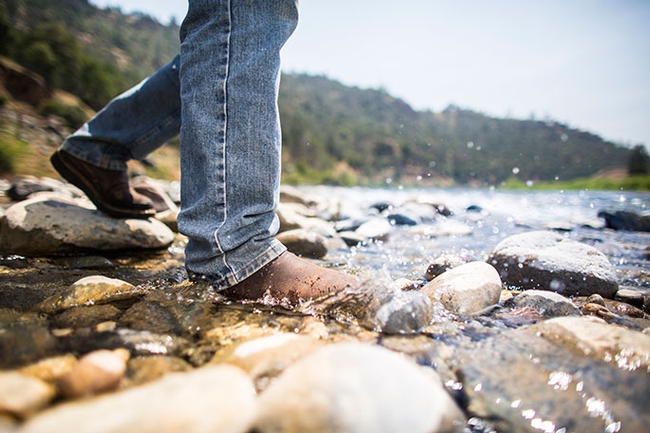Reflections on Water – People and Trees
Coastal California is a hard environment to decide when to irrigate. Fog and rain vary from season to season and day to day. Depending on the proximity to the coast and elevation, average rainfall in Ventura is about 18 inches. That is the average of some years when we get over 40 inches with those when we get 4 inches. Below average is more the norm than above that figure. Late rains into June can happen, but the latest significant rains can also happen in January. So what is average? And based on rainfall, how do you know when to irrigate?
May grey/June gloom adds to the confusion of what might be an appropriate irrigation cycle. That cool, moist, low wind condition fog reduces water use by plants. Fog drip also adds soil moisture that the plant can use. But, as soon as the fog lifts, the wind kicks in and sucks out the soil moisture.
Water moves from the soil, though the roots, up through the plant stem and through the leaves. It's pulled by the conditions outside the leaf. The longer the air outside the leaf is dry, windy and warm, the more water is pulled out of the plant. And then the plant pulls it out of the soil to replace the water lost from the plant. It's called the cohesion-tension theory of water movement. Water molecules stick together and pull themselves along, the way a train locomotive pulls a string of freight cars. This happens whenever the conditions outside of the leaf are “drier” than inside the leaf. It happens in the winter and summer, when the soils are cold and when they are warm. It's a passive, physical process.
When plants lose water through their leaves, it's called transpiration. It's mediated by stomata in the leaves. These openings or pores are similar to the pores in our skin. People lose water off their skin and it's called evaporation or sweating. Water loss from leaves is similar to water loss from skin.
Evaporation from the skin and from leaves cools the surface. This cooling helps prevent heat stress. The leaf and skin both act as radiators. When this water loss stops, both plants and humans can go into heat stress. So water loss has an important function in both plants and humans. For plants, the stomata also need to be open in order to take in carbon dioxide to make sugar by way of photosynthesis.
The weather factors that drive water loss – water that needs to be replaced or the bodies begin to into heat stress – are the mount of light (day length, cloud cover), relative humidity (it dries faster when air is dry and it's slower when it's humid – think desert versus Florida), and windy (more wind, more drying). When water can't be delivered fast enough to the leaf, it wilts, when the human body starts drying out, the skin wrinkles and dries out. In both cases, water needs to be taken in to reverse the loss.
Temperature is important in water loss, but not as important or as much as the other drivers or humidity, day length and wind. When it's cold, leaves and skin both dry out – think freeze-drying, a very successful process for removing water from fresh food to make a light, backpacking food. Often humans respond more to temperature than these other driving factors of water loss. If it's cool, it's not necessary to irrigate the trees. A common grower refrain is, “it's winter, I don't need to irrigate.” After five years of drought, we know better about winter irrigation.
However, this “winter and it's cool, so it's not necessary to drink water while working outside” refrain is common, too. And this can be a real human health problem. Dehydration is something serious and we should all be aware of the need to drink water during these cool, windy days of spring.
Heat stress and irrigation are both more complicated than just being aware of the weather, but below are some helpful guidelines from Cal/OSHA to follow to avoid heat stress in humans. Hey, also might not be too far off for plants, as well.
Attached Images:
